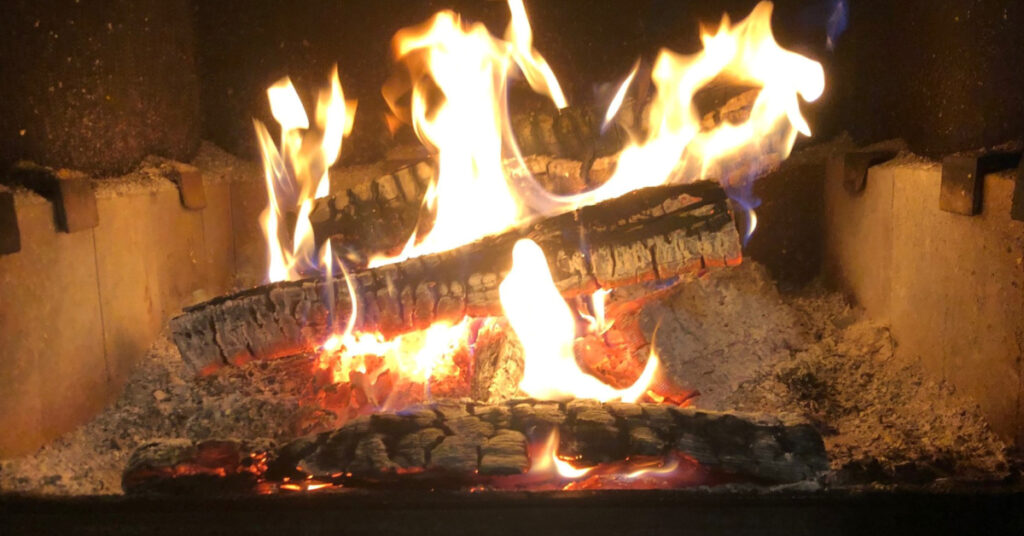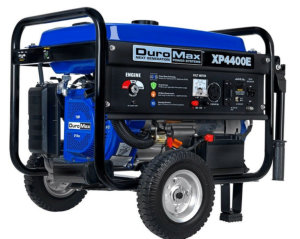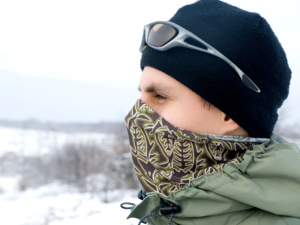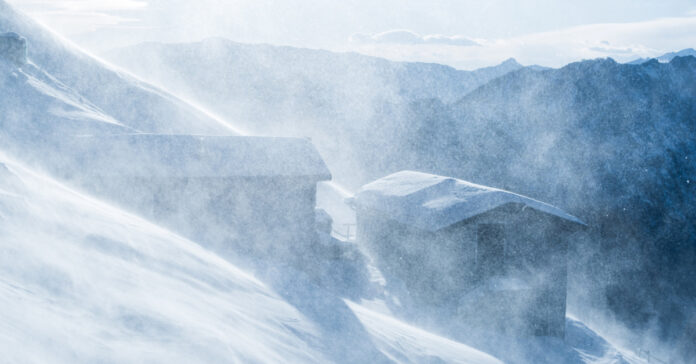The next Polar Vortex is spiraling down on us all, so I hope you have prepped for it. This is the same type of winter blast that resulted in massive power outages, frozen pipes, and at least 246 deaths in Texas back in February of 2021. In my area, we are expecting snow all weekend and temperatures dropping until we hit single digits early next week. Wind chills will be even worse.
Heat and Backup Heat
Obviously, the most important thing to survive freezing temperatures is heat. You need a heat source and a non-electric backup heat source.
While we have a heat pump and a few electric heaters, our primary source of heat is a large wood stove and our secondary is a fireplace insert. On Thursday, we brought in twice as much firewood as normal and then we topped it off on Friday to make up for what we burned in the previous 24 hours. We know we burn extra wood when it is very cold, so we want to be prepared.

We are in no danger of running out of firewood during the cold spell. I have about eight face cords (almost three full cords) of seasoned firewood on hand and four face cords of unseasoned wood. Much of it is within just a few feet of a door, and all the seasoned wood is protected from snow and rain. We prefer to restock when it is warm out, but we can resupply whenever necessary.
If you find yourself without heat because of a power failure, turn to your backup heat source and use it to heat at least one room in your house where you can shelter. Many people use small propane heaters as their backup. Kerosene heaters are another excellent alternative. In an emergency, even a few candles can help keep temperatures up if you are in a small area. Just ensure you have a steady supply of fresh air and watch out for carbon monoxide poisoning.
If the power is on but your furnace can’t keep up, dress warmly, get under blankets, and consider using a heating pad or electric blanket to raise your body temperature.
Electricity Outage
An electricity outage is a real problem during a big chill because it precipitates many other problems, including a lack of heat. Our generator is fueled and ready. We also have extra 5-gallon gas cans on standby. Do you have standby power?

We’ve also charged our batteries, set out our lanterns, and have headlamps handy. That said, my favorite thing to do during a power outage is to take a nap.
Preventing Frozen Pipes
There are two kinds of frozen pipes: pipes that freeze even when you have heat and electricity, and pipes that freeze because your house has no power.
When I lived in the great white north, I experienced the former. It was especially common when pipes ran along outside walls. We learned to leave our bathroom vanity cabinets open so the warm air could circulate near the pipes. On nights when the temps were sub-zero, I would walk around the house before I went to bed, flush each toilet, and run the water at every faucet for a minute or two. This would let the cold water escape and allow warmer water to replace it and help warm the pipes. I prefer doing that every couple of hours over letting a faucet drip.
I’ve also experienced frozen well heads and frozen pipes leading down from the spring. We used a long extension cord and a heating pad to thaw out the well head. The next year, we added insulation to the well box. For the spring, we buried the pipes two feet deep. So far, so good.
Draining Your Pipes
If your power shuts off and you face the threat of frozen pipes, do your best to drain them so there is no water to freeze and crack them. First, ensure you have plenty of fresh water on hand for drinking and other needs. Then turn off your water. This can mean shutting off the breaker to your well or, if you have municipal water, finding the shut-off valve and closing it. Then open a few faucets in your home, starting with those highest up, which might mean a shower head on the second floor. Then open a faucet at a low point in the house. If you don’t have a basement, keep in mind that this might be an outside faucet. The water in your pipes should drain out the lowest faucets. Because your pipes may include multiple runs, it’s best to ensure every faucet is allowed to drain at some point.
Don’t forget to drain water from your appliances. The hoses to your washer/dryer, dishwasher, and even refrigerator can freeze. In the fridge, water in the water filter can freeze, as can water in whole-house filters. Empty those before the house reaches freezing.
It will take a couple days of cold to freeze your hot water tank, but if you think that is a possibility, you can drain it using the tap at the bottom. Attach a hose and let the water run into a floor drain or even outside.
Dressing for the Cold
When it gets cold, I put on fleece-lined pants. When it gets colder, I wear merino wool long underwear. (Yes, I have polyester thermals and polypropylene thermals, but I prefer the wool unless I am going to be very active, in which case I wear the polypropylene.) I also zip the liner into my parka. When it reaches in the single digits or is windy, I wear insulated coveralls. I also wear fleeces, wool sweaters, or lined hoodies.

We have a drying rack by the wood stove, and there are two hats and four pairs of gloves on it. I wear a knit cap most of the time and pull my hood up when it is windy. If it is extremely cold, I will wear a hat with ear protection, a balaclava, or face mask. I also like to wear sunglasses to keep the wind out of my eyes. I pick my gloves based on task. Another reason I have multiple pairs is because putting on a pair of wet gloves sucks. If you don’t need to use your fingers, mittens can be very warm. You can also wear glove liners for added warmth.
Wool socks are a good idea, but it is equally important to have warm footwear. My winter boots use 400 grams of Thinsulate and my DryShod farm boots are supposed to be suitable for use down to -20°F. (We may get to find out if I agree with their claims.) Cold is transmitted from the ground through a boot or shoe’s sole, so a thicker sole and insole can help keep your feet warm.
Stay Home and Stay Warm
Probably the best way to save your life in cold weather is to stay home. Stay indoors, especially in blizzard-like conditions. If you don’t take a trip in a vehicle, you won’t get stranded somewhere on the side of the road. Cancel plans and run your errands before it gets unusually cold. If you must drive somewhere, stick to main roads that are most likely to be plowed, have warm survival gear in your vehicle, and let someone else know where you are going and when you will be back.
We’ve known for a week that this frigid blast is coming, so we did our grocery shopping before it hit. There is no reason for us to leave the property. We have soup and chili prepared so we can heat it on the wood stove for a hot, filling dinner. Warm foods and drinks will not only warm you from the inside, clutching a warm mug will make you feel better. Have some comfort foods at hand. Ample calories and fat will give your body some much-needed fuel to generate warmth.
This may sound like basic information everyone should know, but each year, people die in cold weather. Sometimes it’s a heart attack from shoveling the snow, but it is often because they were foolish or unprepared. If you call yourself a pepper, at the very least you should be prepared for a winter storm.
UPDATE: At 10 a.m. Saturday morning, I was checking out this wind chill map and noted it felt like -68 in parts of North Dakota while South Dakota was ten degrees warmer. This makes my single digit temps seem balmy. Still, I expect they are better prepared and more used to it in the Dakotas than they are in parts of Oklahoma where the wind chill was -10 or so. Stay warm, folks. For much of the country, the worst is yet to come.







